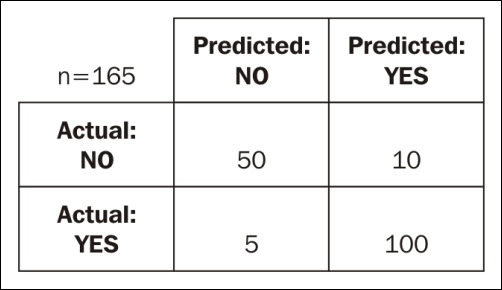Without getting too deep into the machine learning terminology, this test is what is known as a binary classifier, which means that it is trying to predict from only two options: have cancer or no cancer. When we are dealing with binary classifiers, we can draw what are called confusion matrices, which are 2 x 2 matrices that house all the four possible outcomes of our experiment.
Let's try some different numbers. Let's say 165 people walked in for the study. So, our n (sample size) is 165 people. All 165 people are given the test and asked if they have cancer (provided through various other means). The following confusion matrix shows us the results of this experiment:

The matrix shows that 50 people were predicted to have no cancer and did not have it, 100 people were predicted to have cancer and actually did have it, and so on. We have the following four classes, again, all with different names:



